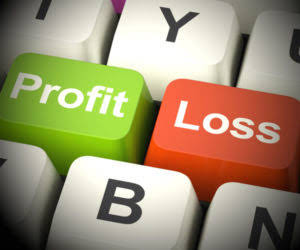
Having robust inventory management softwarecan help you track inventory, predict future selling trends, and identify slow-moving items before you put in your next repurchasing order. It can be symptomatic of poor products, poor management forecasts of demand, and/or poor inventory management. Looking at the amount of obsolete inventory a company creates will give investors an idea of how well the product is selling and how effective the company’s inventory process is. GAAP requires companies to establish an inventory reserve account for obsolete inventory on their balance sheets and expense their obsolete inventory as they dispose of it, which reduces profits or results in losses.
What Is Dead Stock? What to Do With Obsolete Inventory?

Lastly, having good communication with suppliers and customers can provide some insight into where the market is going and notify you of any products that may soon become obsolete. Dead stock represents lost opportunities to sell something better, and businesses with slim margins are particularly at risk of collapsing if they do not offload their dead stock. By following these tips, you can improve your inventory management and achieve your business goals.

What is Physical Stock? Meaning, Types, Steps & Best Practices of Physical Inventory Counting Methods in 2023
At Business.org, our research is meant to offer general product and service recommendations. We don’t guarantee that our suggestions will work best for each individual or business, so consider your unique needs when choosing products and services. The reorder point is the point at which you reorder product in your inventory. Reorder points may be manual, but they may also be automatically triggered by the date or by your current inventory levels.

How to Identify and Improve Poor Inventory Management
- By reorganizing, they noticed a 5% increase in sales of high-value items, now placed prominently near the cashier.
- Alternatively, you can try product bundling obsolete items with a fast-selling item (and even offer free shipping).
- When you miscalculate the need for an item and your stock turnover is slower than you anticipated, you may carry inventory that has lost part or all of the value.
- A bill of materials (BOM) breaks down all the components and raw materials needed to produce an item.
- With a management solution, you can store a greater number and variety of items, ensure items you need are always available, eliminate delays in equipment repairs and get rid of overstock.
An automated storage and retrieval system (ASRS) is a computer-controlled system that can automatically store and retrieve items from your warehouse. This removes human error from your inventory management (no warehouse employees what is bad inventory called accidentally storing product in the wrong place or retrieving the wrong item for a customer order). But it’s also very expensive since you have to invest in (and maintain) machines that can access every part of your warehouse.
Implement Marketing Strategies
Ideally, you should act on aging stock before it reaches the point of being considered dead stock. Doing so, you may uncover some obsolete products that have gone unnoticed. If a product is known to expire after a certain period, you can set alerts to when a product is reaching that point. They negotiated better terms with suppliers that resulted in a 3% discount on bulk orders that helped them save roughly $300 quarterly. They transitioned to a cloud-based system for $1,500 annually, which allowed for real-time tracking and branch synchronization.
Obsolete inventory constitutes a loss for your company, since you’ve already paid to have the items produced, shipped, and stored and you can no longer sell those items. Using a unified inventory management solution allows for faster identification of inventory problems and results in fewer bad inventory issues like overstock. Though there are several ways to help avoid accumulating obsolete inventory, carrying any type of dead stock is inevitable.
- Poor inventory management can be difficult to identify, as it can manifest in many different ways.
- For instance, a scrapbook company may order 1,000 paper pads from their manufacturer, which are delivered in a single pallet.
- However, lean production systems may result in stock shortages if the business owner doesn’t accurately forecast customer demand.
- A way of performing transactions that involves populating a preexisting form (usually a PO or Invoice) with inventory records and then applying the same transaction data to those records.
- Overstocks are a $50 Billion dollar problem that is having a devastating socio-economic, and environmental impact on the world.
SSCC = Serial shipping container code
If you notice any of these signs in your business, it is important to take steps to improve your inventory management. To avoid these negative consequences, businesses should implement effective inventory management practices. Evaluate current systems, procedures, and historical data https://www.bookstime.com/ to identify vulnerabilities and recurring issues in inventory management. Now that you know the jargon, you can confidently research the inventory management solutions available to your business. See our in-depth review of our favorite inventory management solutions to get started.
- Obsolete inventory is inventory that a company still has on hand after it should have been sold.
- To learn more about how ShipBob can help you optimize your supply chain, click the button below to start the conversation.
- With the right data, you can identify slow-moving items and make decisions on whether to discontinue certain items or run a promotion to sell slow-moving items faster before they completely lose their value.
- In this article, we discuss how to avoid, identify, reduce, and manage obsolete inventory to ensure a more profitable business.
- A separate account such as inventory write-off expense account is included with the other inventory accounts.
- The amount to be written down is the difference between the book value of the inventory and the amount of cash that the business can obtain by disposing of the inventory in the most optimal manner.